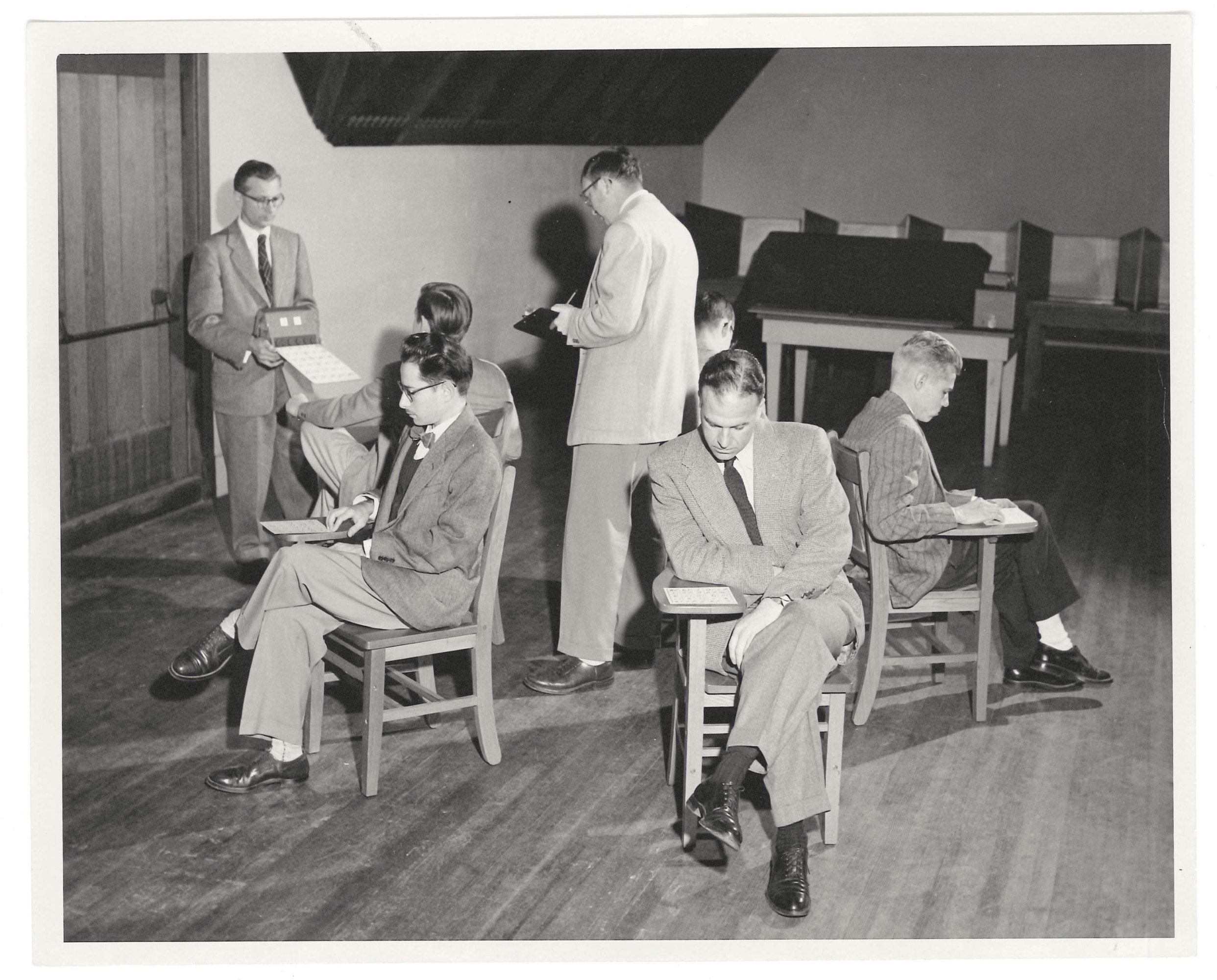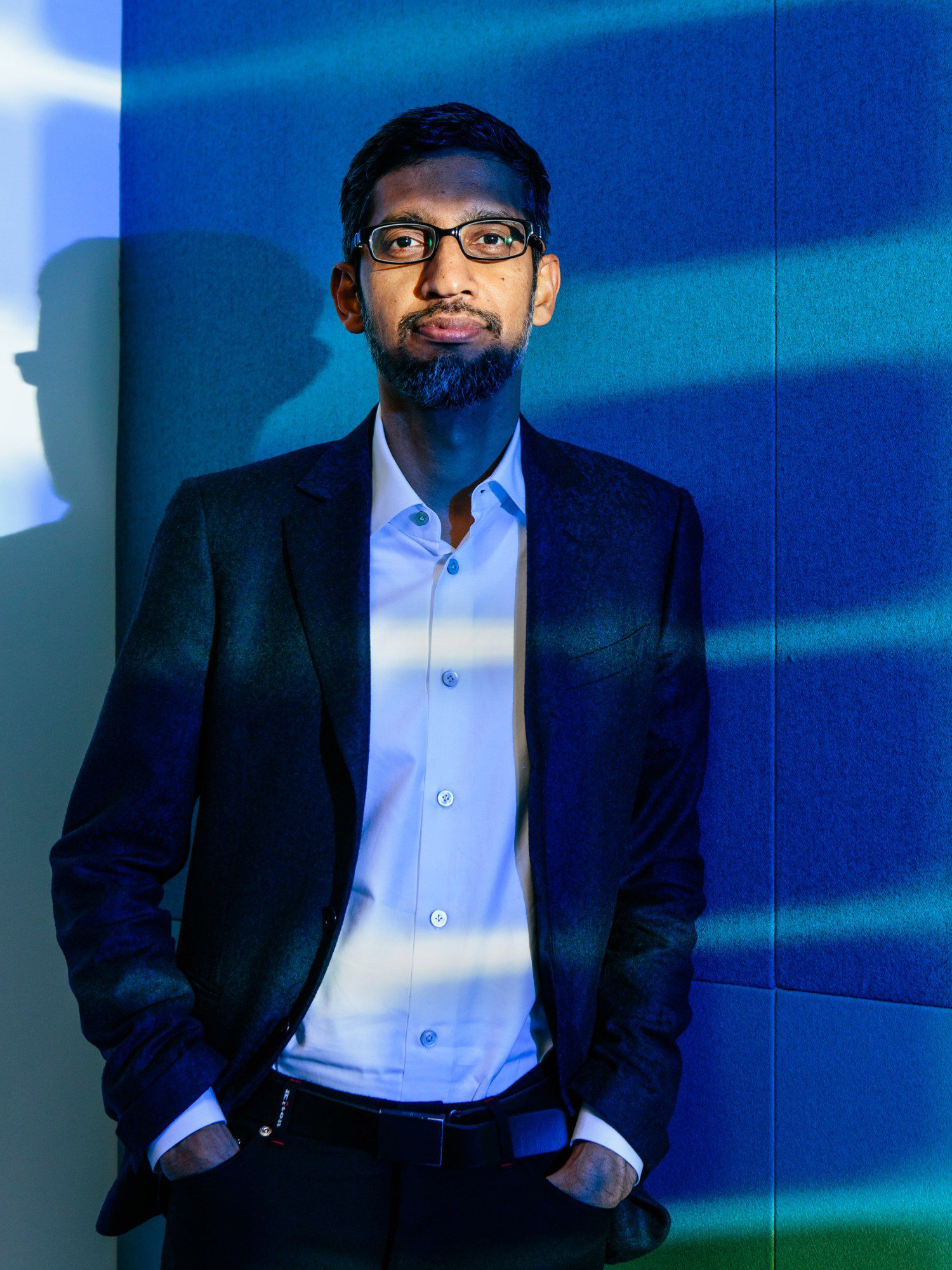The data center boom in the desert
In the high desert east of Reno, Nevada, construction crews are flattening the golden foothills of the Virginia Range, laying the foundations of a data center city.
Google, Tract, Switch, EdgeCore, Novva, Vantage, and PowerHouse are all operating, building, or expanding huge facilities within the Tahoe Reno Industrial Center, a business park bigger than the city of Detroit.
This story is a part of MIT Technology Review’s series “Power Hungry: AI and our energy future,” on the energy demands and carbon costs of the artificial-intelligence revolution.
Meanwhile, Microsoft acquired more than 225 acres of undeveloped property within the center and an even larger plot in nearby Silver Springs, Nevada. Apple is expanding its data center, located just across the Truckee River from the industrial park. OpenAI has said it’s considering building a data center in Nevada as well.
The corporate race to amass computing resources to train and run artificial intelligence models and store information in the cloud has sparked a data center boom in the desert—just far enough away from Nevada’s communities to elude wide notice and, some fear, adequate scrutiny.

The full scale and potential environmental impacts of the developments aren’t known, because the footprint, energy needs, and water requirements are often closely guarded corporate secrets. Most of the companies didn’t respond to inquiries from MIT Technology Review, or declined to provide additional information about the projects.
But there’s “a whole lot of construction going on,” says Kris Thompson, who served as the longtime project manager for the industrial center before stepping down late last year. “The last number I heard was 13 million square feet under construction right now, which is massive.”
Indeed, it’s the equivalent of almost five Empire State Buildings laid out flat. In addition, public filings from NV Energy, the state’s near-monopoly utility, reveal that a dozen data-center projects, mostly in this area, have requested nearly six gigawatts of electricity capacity within the next decade.
That would make the greater Reno area—the biggest little city in the world—one of the largest data-center markets around the globe.
It would also require expanding the state’s power sector by about 40%, all for a single industry in an explosive growth stage that may, or may not, prove sustainable. The energy needs, in turn, suggest those projects could consume billions of gallons of water per year, according to an analysis conducted for this story.



The build-out of a dense cluster of energy and water-hungry data centers in a small stretch of the nation’s driest state, where climate change is driving up temperatures faster than anywhere else in the country, has begun to raise alarms among water experts, environmental groups, and residents. That includes members of the Pyramid Lake Paiute Tribe, whose namesake water body lies within their reservation and marks the end point of the Truckee River, the region’s main source of water.
Much of Nevada has suffered through severe drought conditions for years, farmers and communities are drawing down many of the state’s groundwater reservoirs faster than they can be refilled, and global warming is sucking more and more moisture out of the region’s streams, shrubs, and soils.
“Telling entities that they can come in and stick more straws in the ground for data centers is raising a lot of questions about sound management,” says Kyle Roerink, executive director of the Great Basin Water Network, a nonprofit that works to protect water resources throughout Nevada and Utah.
“We just don’t want to be in a situation where the tail is wagging the dog,” he later added, “where this demand for data centers is driving water policy.”
Luring data centers
In the late 1850s, the mountains southeast of Reno began enticing prospectors from across the country, who hoped to strike silver or gold in the famed Comstock Lode. But Storey County had few residents or economic prospects by the late 1990s, around the time when Don Roger Norman, a media-shy real estate speculator, spotted a new opportunity in the sagebrush-covered hills.
He began buying up tens of thousands of acres of land for tens of millions of dollars and lining up development approvals to lure industrial projects to what became the Tahoe Reno Industrial Center. His partners included Lance Gilman, a cowboy-hat-wearing real estate broker, who later bought the nearby Mustang Ranch brothel and won a seat as a county commissioner.
In 1999, the county passed an ordinance that preapproves companies to develop most types of commercial and industrial projects across the business park, cutting months to years off the development process. That helped cinch deals with a flock of tenants looking to build big projects fast, including Walmart, Tesla, and Redwood Materials. Now the promise of fast permits is helping to draw data centers by the gigawatt.
On a clear, cool January afternoon, Brian Armon, a commercial real estate broker who leads the industrial practices group at NAI Alliance, takes me on a tour of the projects around the region, which mostly entails driving around the business center.



After pulling off Interstate 80 onto USA Parkway, he points out the cranes, earthmovers, and riprap foundations, where a variety of data centers are under construction. Deeper into the industrial park, Armon pulls up near Switch’s long, low, arched-roof facility, which sits on a terrace above cement walls and security gates. The Las Vegas–based company says the first phase of its data center campus encompasses more than a million square feet, and that the full build-out will cover seven times that space.
Over the next hill, we turn around in Google’s parking lot. Cranes, tents, framing, and construction equipment extend behind the company’s existing data center, filling much of the 1,210-acre lot that the search engine giant acquired in 2017.
Last August, during an event at the University of Nevada, Reno, the company announced it would spend $400 million to expand the data center campus along with another one in Las Vegas.
Thompson says that the development company, Tahoe Reno Industrial LLC, has now sold off every parcel of developable land within the park (although several lots are available for resale following the failed gamble of one crypto tenant).
When I ask Armon what’s attracting all the data centers here, he starts with the fast approvals but cites a list of other lures as well: The inexpensive land. NV Energy’s willingness to strike deals to supply relatively low-cost electricity. Cool nighttime and winter temperatures, as far as American deserts go, which reduce the energy and water needs. The proximity to tech hubs such as Silicon Valley, which cuts latency for applications in which milliseconds matter. And the lack of natural disasters that could shut down the facilities, at least for the most part.
“We are high in seismic activity,” he says. “But everything else is good. We’re not going to have a tornado or flood or a devastating wildfire.”
Then there’s the generous tax policies.



Nevada doesn’t charge corporate income tax, and it has also enacted deep tax cuts specifically for data centers that set up shop in the state. That includes abatements of up to 75% on property tax for a decade or two—and nearly as much of a bargain on the sales and use taxes applied to equipment purchased for the facilities.
Data centers don’t require many permanent workers to run the operations, but the projects have created thousands of construction jobs. They’re also helping to diversify the region’s economy beyond casinos and generating tax windfalls for the state, counties, and cities, says Jeff Sutich, executive director of the Northern Nevada Development Authority. Indeed, just three data-center projects, developed by Apple, Google, and Vantage, will produce nearly half a billion dollars in tax revenue for Nevada, even with those generous abatements, according to the Nevada Governor’s Office of Economic Development.
The question is whether the benefits of data centers are worth the tradeoffs for Nevadans, given the public health costs, greenhouse-gas emissions, energy demands, and water strains.
The rain shadow
The Sierra Nevada’s granite peaks trace the eastern edge of California, forcing Pacific Ocean winds to rise and cool. That converts water vapor in the air into the rain and snow that fill the range’s tributaries, rivers, and lakes.
But the same meteorological phenomenon casts a rain shadow over much of neighboring Nevada, forming an arid expanse known as the Great Basin Desert. The state receives about 10 inches of precipitation a year, about a third of the national average.
The Truckee River draws from the melting Sierra snowpack at the edge of Lake Tahoe, cascades down the range, and snakes through the flatlands of Reno and Sparks. It forks at the Derby Dam, a Reclamation Act project a few miles from the Tahoe Reno Industrial Center, which diverts water to a farming region further east while allowing the rest to continue north toward Pyramid Lake.
Along the way, an engineered system of reservoirs, canals, and treatment plants divert, store, and release water from the river, supplying businesses, cities, towns, and native tribes across the region. But Nevada’s population and economy are expanding, creating more demands on these resources even as they become more constrained.



Throughout much of the 2020s the state has suffered through one of the hottest and most widespread droughts on record, extending two decades of abnormally dry conditions across the American West. Some scientists fear it may constitute an emerging megadrought.
About 50% of Nevada currently faces moderate to exceptional drought conditions. In addition, more than half of the state’s hundreds of groundwater basins are already “over-appropriated,” meaning the water rights on paper exceed the levels believed to be underground.
It’s not clear if climate change will increase or decrease the state’s rainfall levels, on balance. But precipitation patterns are expected to become more erratic, whiplashing between short periods of intense rainfall and more-frequent, extended, or severe droughts.
In addition, more precipitation will fall as rain rather than snow, shortening the Sierra snow season by weeks to months over the coming decades.
“In the extreme case, at the end of the century, that’s pretty much all of winter,” says Sean McKenna, executive director of hydrologic sciences at the Desert Research Institute, a research division of the Nevada System of Higher Education.
That loss will undermine an essential function of the Sierra snowpack: reliably delivering water to farmers and cities when it’s most needed in the spring and summer, across both Nevada and California.
These shifting conditions will require the region to develop better ways to store, preserve, and recycle the water it does get, McKenna says. Northern Nevada’s cities, towns, and agencies will also need to carefully evaluate and plan for the collective impacts of continuing growth and development on the interconnected water system, particularly when it comes to water-hungry projects like data centers, he adds.
“We can’t consider each of these as a one-off, without considering that there may be tens or dozens of these in the next 15 years,” McKenna says.
Thirsty data centers
Data centers suck up water in two main ways.
As giant rooms of server racks process information and consume energy, they generate heat that must be shunted away to prevent malfunctions and damage to the equipment. The processing units optimized for training and running AI models often draw more electricity and, in turn, produce more heat.
To keep things cool, more and more data centers have turned to liquid cooling systems that don’t need as much electricity as fan cooling or air-conditioning.
These often rely on water to absorb heat and transfer it to outdoor cooling towers, where much of the moisture evaporates. Microsoft’s US data centers, for instance, could have directly evaporated nearly 185,000 gallons of “clean freshwater” in the course of training OpenAI’s GPT-3 large language model, according to a 2023 preprint study led by researchers at the University of California, Riverside. (The research has since been peer-reviewed and is awaiting publication.)
What’s less appreciated, however, is that the larger data-center drain on water generally occurs indirectly, at the power plants generating extra electricity for the turbocharged AI sector. These facilities, in turn, require more water to cool down equipment, among other purposes.
You have to add up both uses “to reflect the true water cost of data centers,” says Shaolei Ren, an associate professor of electrical and computer engineering at UC Riverside and coauthor of the study.
Ren estimates that the 12 data-center projects listed in NV Energy’s report would directly consume between 860 million gallons and 5.7 billion gallons a year, based on the requested electricity capacity. (“Consumed” here means the water is evaporated, not merely withdrawn and returned to the engineered water system.) The indirect water drain associated with electricity generation for those operations could add up to 15.5 billion gallons, based on the average consumption of the regional grid.
The exact water figures would depend on shifting climate conditions, the type of cooling systems each data center uses, and the mix of power sources that supply the facilities.
Solar power, which provides roughly a quarter of Nevada’s power, requires relatively little water to operate, for instance. But natural-gas plants, which generate about 56%, withdraw 2,803 gallons per megawatt-hour on average, according to the Energy Information Administration.
Geothermal plants, which produce about 10% of the state’s electricity by cycling water through hot rocks, generally consume less water than fossil fuel plants do but often require more water than other renewables, according to some research.
But here too, the water usage varies depending on the type of geothermal plant in question. Google has lined up several deals to partially power its data centers through Fervo Energy, which has helped to commercialize an emerging approach that injects water under high pressure to fracture rock and form wells deep below the surface.
The company stresses that it doesn’t evaporate water for cooling and that it relies on brackish groundwater, not fresh water, to develop and run its plants. In a recent post, Fervo noted that its facilities consume significantly less water per megawatt-hour than coal, nuclear, or natural-gas plants do.
Part of NV Energy’s proposed plan to meet growing electricity demands in Nevada includes developing several natural-gas peaking units, adding more than one gigawatt of solar power and installing another gigawatt of battery storage. It’s also forging ahead with a more than $4 billion transmission project.
But the company didn’t respond to questions concerning how it will supply all of the gigawatts of additional electricity requested by data centers, if the construction of those power plants will increase consumer rates, or how much water those facilities are expected to consume.



“NV Energy teams work diligently on our long-term planning to make investments in our infrastructure to serve new customers and the continued growth in the state without putting existing customers at risk,” the company said in a statement.
An added challenge is that data centers need to run around the clock. That will often compel utilities to develop new electricity-generating sources that can run nonstop as well, as natural-gas, geothermal, or nuclear plants do, says Emily Grubert, an associate professor of sustainable energy policy at the University of Notre Dame, who has studied the relative water consumption of electricity sources.
“You end up with the water-intensive resources looking more important,” she adds.
Even if NV Energy and the companies developing data centers do strive to power them through sources with relatively low water needs, “we only have so much ability to add six gigawatts to Nevada’s grid,” Grubert explains. “What you do will never be system-neutral, because it’s such a big number.”
Securing supplies
On a mid-February morning, I meet TRI’s Thompson and Don Gilman, Lance Gilman’s son, at the Storey County offices, located within the industrial center.
“I’m just a country boy who sells dirt,” Gilman, also a real estate broker, says by way of introduction.
We climb into his large SUV and drive to a reservoir in the heart of the industrial park, filled nearly to the lip.
Thompson explains that much of the water comes from an on-site treatment facility that filters waste fluids from companies in the park. In addition, tens of millions of gallons of treated effluent will also likely flow into the tank this year from the Truckee Meadows Water Authority Reclamation Facility, near the border of Reno and Sparks. That’s thanks to a 16-mile pipeline that the developers, the water authority, several tenants, and various local cities and agencies partnered to build, through a project that began in 2021.
“Our general improvement district is furnishing that water to tech companies here in the park as we speak,” Thompson says. “That helps preserve the precious groundwater, so that is an environmental feather in the cap for these data centers. They are focused on environmental excellence.”



But data centers often need drinking-quality water—not wastewater merely treated to irrigation standards—for evaporative cooling, “to avoid pipe clogs and/or bacterial growth,” the UC Riverside study notes. For instance, Google says its data centers withdrew about 7.7 billion gallons of water in 2023, and nearly 6 billion of those gallons were potable.
Tenants in the industrial park can potentially obtain access to water from the ground and the Truckee River, as well. From early on, the master developers worked hard to secure permits to water sources, since they are nearly as precious as development entitlements to companies hoping to build projects in the desert.
Initially, the development company controlled a private business, the TRI Water and Sewer Company, that provided those services to the business park’s tenants, according to public documents. The company set up wells, a water tank, distribution lines, and a sewer disposal system.
But in 2000, the board of county commissioners established a general improvement district, a legal mechanism for providing municipal services in certain parts of the state, to manage electricity and then water within the center. It, in turn, hired TRI Water and Sewer as the operating company.
As of its 2020 service plan, the general improvement district held permits for nearly 5,300 acre-feet of groundwater, “which can be pumped from well fields within the service area and used for new growth as it occurs.” The document lists another 2,000 acre-feet per year available from the on-site treatment facility, 1,000 from the Truckee River, and 4,000 more from the effluent pipeline.
Those figures haven’t budged much since, according to Shari Whalen, general manager of the TRI General Improvement District. All told, they add up to more than 4 billion gallons of water per year for all the needs of the industrial park and the tenants there, data centers and otherwise.
Whalen says that the amount and quality of water required for any given data center depends on its design, and that those matters are worked out on a case-by-case basis.
When asked if the general improvement district is confident that it has adequate water resources to supply the needs of all the data centers under development, as well as other tenants at the industrial center, she says: “They can’t just show up and build unless they have water resources designated for their projects. We wouldn’t approve a project if it didn’t have those water resources.”
Water battles
As the region’s water sources have grown more constrained, lining up supplies has become an increasingly high-stakes and controversial business.
More than a century ago, the US federal government filed a lawsuit against an assortment of parties pulling water from the Truckee River. The suit would eventually establish that the Pyramid Lake Paiute Tribe’s legal rights to water for irrigation superseded other claims. But the tribe has been fighting to protect those rights and increase flows from the river ever since, arguing that increasing strains on the watershed from upstream cities and businesses threaten to draw away water reserved for reservation farming, decrease lake levels, and harm native fish.
The Pyramid Lake Paiute Tribe considers the water body and its fish, including the endangered cui-ui and threatened Lahontan cutthroat trout, to be essential parts of its culture, identity, and way of life. The tribe was originally named Cui-ui Ticutta, which translates to cui-ui eaters. The lake continues to provide sustenance as well as business for the tribe and its members, a number of whom operate boat charters and fishing guide services.
“It’s completely tied into us as a people,” says Steven Wadsworth, chairman of the Pyramid Lake Paiute Tribe.
“That is what has sustained us all this time,” he adds. “It’s just who we are. It’s part of our spiritual well-being.”



In recent decades, the tribe has sued the Nevada State Engineer, Washoe County, the federal government, and others for overallocating water rights and endangering the lake’s fish. It also protested the TRI General Improvement District’s applications to draw thousands of additional acre‑feet of groundwater from a basin near the business park. In 2019, the State Engineer’s office rejected those requests, concluding that the basin was already fully appropriated.
More recently, the tribe took issue with the plan to build the pipeline and divert effluent that would have flown into the Truckee, securing an agreement that required the Truckee Meadows Water Authority and other parties to add back several thousand acre‑feet of water to the river.
Whalen says she’s sensitive to Wadsworth’s concerns. But she says that the pipeline promises to keep a growing amount of treated wastewater out of the river, where it could otherwise contribute to rising salt levels in the lake.
“I think that the pipeline from [the Truckee Meadows Water Authority] to our system is good for water quality in the river,” she says. “I understand philosophically the concerns about data centers, but the general improvement district is dedicated to working with everyone on the river for regional water-resource planning—and the tribe is no exception.”
Water efficiency
In an email, Thompson added that he has “great respect and admiration,” for the tribe and has visited the reservation several times in an effort to help bring industrial or commercial development there.
He stressed that all of the business park’s groundwater was “validated by the State Water Engineer,” and that the rights to surface water and effluent were purchased “for fair market value.”
During the earlier interview at the industrial center, he and Gilman had both expressed confidence that tenants in the park have adequate water supplies, and that the businesses won’t draw water away from other areas.
“We’re in our own aquifer, our own water basin here,” Thompson said. “You put a straw in the ground here, you’re not going to pull water from Fernley or from Reno or from Silver Springs.”
Gilman also stressed that data-center companies have gotten more water efficient in recent years, echoing a point others made as well.
“With the newer technology, it’s not much of a worry,” says Sutich, of the Northern Nevada Development Authority. “The technology has come a long way in the last 10 years, which is really giving these guys the opportunity to be good stewards of water usage.”



Indeed, Google’s existing Storey County facility is air-cooled, according to the company’s latest environmental report. The data center withdrew 1.9 million gallons in 2023 but only consumed 200,000 gallons. The rest cycles back into the water system.
Google said all the data centers under construction on its campus will also “utilize air-cooling technology.” The company didn’t respond to a question about the scale of its planned expansion in the Tahoe Reno Industrial Center, and referred a question about indirect water consumption to NV Energy.
The search giant has stressed that it strives to be water efficient across all of its data centers, and decides whether to use air or liquid cooling based on local supply and projected demand, among other variables.
Four years ago, the company set a goal of replenishing more water than it consumes by 2030. Locally, it also committed to provide half a million dollars to the National Forest Foundation to improve the Truckee River watershed and reduce wildfire risks.
Microsoft clearly suggested in earlier news reports that the Silver Springs land it purchased around the end of 2022 would be used for a data center. NAI Alliance’s market real estate report identifies that lot, as well as the parcel Microsoft purchased within the Tahoe Reno Industrial Center, as data center sites.
But the company now declines to specify what it intends to build in the region.
“While the land purchase is public knowledge, we have not disclosed specific details [of] our plans for the land or potential development timelines,” wrote Donna Whitehead, a Microsoft spokesperson, in an email.



Microsoft has also scaled down its global data-center ambitions, backing away from several projects in recent months amid shifting economic conditions, according to various reports.
Whatever it ultimately does or doesn’t build, the company stresses that it has made strides to reduce water consumption in its facilities. Late last year, the company announced that it’s using “chip-level cooling solutions” in data centers, which continually circulate water between the servers and chillers through a closed loop that the company claims doesn’t lose any water to evaporation. It says the design requires only a “nominal increase” in energy compared to its data centers that rely on evaporative water cooling.
Others seem to be taking a similar approach. EdgeCore also said its 900,000-square-foot data center at the Tahoe Reno Industrial Center will rely on an “air-cooled closed-loop chiller” that doesn’t require water evaporation for cooling.
But some of the companies seem to have taken steps to ensure access to significant amounts of water. Switch, for instance, took a lead role in developing the effluent pipeline. In addition, Tract, which develops campuses on which third-party data centers can build their own facilities, has said it lined up more than 1,100 acre-feet of water rights, the equivalent of nearly 360 million gallons a year.
Apple, Novva, Switch, Tract, and Vantage didn’t respond to inquiries from MIT Technology Review.
Coming conflicts
The suggestion that companies aren’t straining water supplies when they adopt air cooling is, in many cases, akin to saying they’re not responsible for the greenhouse gas produced through their power use simply because it occurs outside of their facilities. In fact, the additional water used at a power plant to meet the increased electricity needs of air cooling may exceed any gains at the data center, Ren, of UC Riverside, says.
“That’s actually very likely, because it uses a lot more energy,” he adds.
That means that some of the companies developing data centers in and around Storey County may simply hand off their water challenges to other parts of Nevada or neighboring states across the drying American West, depending on where and how the power is generated, Ren says.
Google has said its air-cooled facilities require about 10% more electricity, and its environmental report notes that the Storey County facility is one of its two least-energy-efficient data centers.



Some fear there’s also a growing mismatch between what Nevada’s water permits allow, what’s actually in the ground, and what nature will provide as climate conditions shift. Notably, the groundwater committed to all parties from the Tracy Segment basin—a long-fought-over resource that partially supplies the TRI General Improvement District—already exceeds the “perennial yield.” That refers to the maximum amount that can be drawn out every year without depleting the reservoir over the long term.
“If pumping does ultimately exceed the available supply, that means there will be conflict among users,” Roerink, of the Great Basin Water Network, said in an email. “So I have to wonder: Who could be suing whom? Who could be buying out whom? How will the tribe’s rights be defended?”
The Truckee Meadows Water Authority, the community-owned utility that manages the water system for Reno and Sparks, said it is planning carefully for the future and remains confident there will be “sufficient resources for decades to come,” at least within its territory east of the industrial center.
Storey County, the Truckee-Carson Irrigation District, and the State Engineer’s office didn’t respond to questions or accept interview requests.
Open for business
As data center proposals have begun shifting into Northern Nevada’s cities, more local residents and organizations have begun to take notice and express concerns. The regional division of the Sierra Club, for instance, recently sought to overturn the approval of Reno’s first data center, about 20 miles west of the Tahoe Reno Industrial Center.
Olivia Tanager, director of the Sierra Club’s Toiyabe Chapter, says the environmental organization was shocked by the projected electricity demands from data centers highlighted in NV Energy’s filings.



“We have increasing interest in understanding the impact that data centers will have to our climate goals, to our grid as a whole, and certainly to our water resources,” she says. “The demands are extraordinary, and we don’t have that amount of water to toy around with.”
During a city hall hearing in January that stretched late into the evening, she and a line of residents raised concerns about the water, energy, climate, and employment impacts of AI data centers. At the end, though, the city council upheld the planning department’s approval of the project, on a 5-2 vote.
“Welcome to Reno,” Kathleen Taylor, Reno’s vice mayor, said before casting her vote. “We’re open for business.”
Where the river ends
In late March, I walk alongside Chairman Wadsworth, of the Pyramid Lake Paiute Tribe, on the shores of Pyramid Lake, watching a row of fly-fishers in waders cast their lines into the cold waters.
The lake is the largest remnant of Lake Lahontan, an Ice Age inland sea that once stretched across western Nevada and would have submerged present-day Reno. But as the climate warmed, the lapping waters retreated, etching erosional terraces into the mountainsides and exposing tufa deposits around the lake, large formations of porous rock made of calcium-carbonate. That includes the pyramid-shaped island on the eastern shore that inspired the lake’s name.



In the decades after the US Reclamation Service completed the Derby Dam in 1905, Pyramid Lake declined another 80 feet and nearby Winnemucca Lake dried up entirely.
“We know what happens when water use goes unchecked,” says Wadsworth, gesturing eastward toward the range across the lake, where Winnemucca once filled the next basin over. “Because all we have to do is look over there and see a dry, barren lake bed that used to be full.”
In an earlier interview, Wadsworth acknowledged that the world needs data centers. But he argued they should be spread out across the country, not densely clustered in the middle of the Nevada desert.
Given the fierce competition for resources up to now, he can’t imagine how there could be enough water to meet the demands of data centers, expanding cities, and other growing businesses without straining the limited local supplies that should, by his accounting, flow to Pyramid Lake.
He fears these growing pressures will force the tribe to wage new legal battles to protect their rights and preserve the lake, extending what he refers to as “a century of water wars.”
“We have seen the devastating effects of what happens when you mess with Mother Nature,” Wadsworth says. “Part of our spirit has left us. And that’s why we fight so hard to hold on to what’s left.”























































